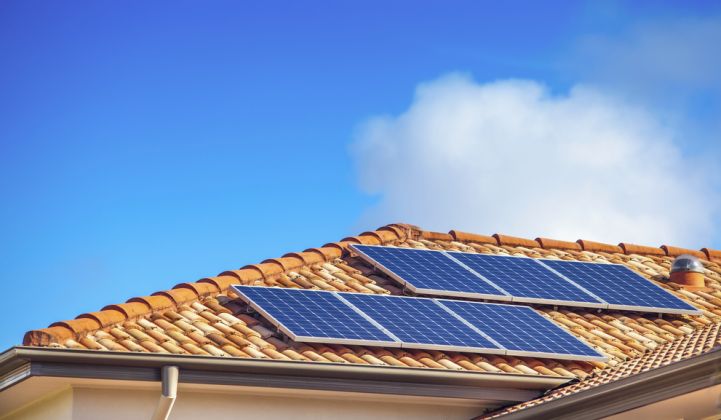In Pacific Gas & Electric territory, the number of new solar installations is growing at the rapid clip of 4,000 new customers per month. At that pace, the California utility connects another solar customer to its electric grid about every 11 minutes.
Yesterday, PG&E announced it now has more than 150,000 solar customers, and claimed the title of largest solar utility in the United States.
Last year was a bumper year for PG&E, with more than 45,000 new solar customers added in 2014 alone -- more new additions than in any other year in the utility’s history. PG&E has also succeeded in reducing the processing time for new solar installations from four weeks to five days.
In addition to being a hotspot for solar PV, California has more electric vehicles on the road than any other state, the most significant mandates on energy storage and probably the largest number of smart meters in the country, said Chris Johns, president of PG&E, at a recent Edison Foundation event in Washington, D.C.
“It’s become abundantly clear to us that the conventional, one-way electric grid is something that needs to change, and it’s got to change rapidly, at the same pace that these technologies are coming on board,” he said.
As customers connect more and more devices to the grid, in PG&E territory and across the country, they will come to expect seamless communication between these devices and new services that allow them to sell the electricity they generate, said Johns. The job of utilities is to create a platform for these types of connections to occur.
“Today, people have access to tools and technology that give them unprecedented visibility and unprecedented control, and allows them to tailor their energy usage to their personal needs and their wants. Whether that’s because of their budget, their schedule, their environmental values, whatever -- they have that opportunity,” he said. “And the reality is, this is just the very beginning of that transformation."
Rooftop solar customers might eventually want to sell some of the power they generate to their neighbors and only use the utility as a broker in between, a sort of “Uber for electricity,” said Johns. Utilities need to shift their focus from providing safe, reliable power alone, to also becoming a platform for innovation.
Getting there, however, comes with its challenges, said Johns.
Utilities need to invest more in new infrastructure, like voltage controls, advanced sensors and automation technology. In order to get approval for these investments, “as an industry, we need to be proactive and aggressive in helping policymakers understand this vision for the grid and why modernization is so important,” said Johns.
Federal and state policy, regulatory models and permitting processes also need to be updated so that they support innovation, he said.
Finally, utilities need to be open to partnerships with third parties, said Johns. PG&E has made a point of reaching out to companies in Silicon Valley, and finding opportunities to work together.
For instance, creating a program to allow customers to go solar who either can’t afford it or aren’t interested in putting panels on their roof would be a great opportunity for PG&E to partner with an outside party. PG&E has already announced plans to start offering a 100-percent-renewable “green option” that will allow customers to buy into a pool of locally produced solar energy.
“It used to be that a lot of the innovation really came from within the industry itself…but nowadays we need to recognize that a lot of the innovation is occurring and being driven by non-traditional players, people that have not been involved in our industry before,” said Johns. “And we’re only going to see a lot more of that.”
“That means we need to be open, and we need to be excited about partnering with the non-traditional players,” he added. “Because they’re coming after our customers and they’re providing them with new services -- and they’re going to do that with or without us.”



